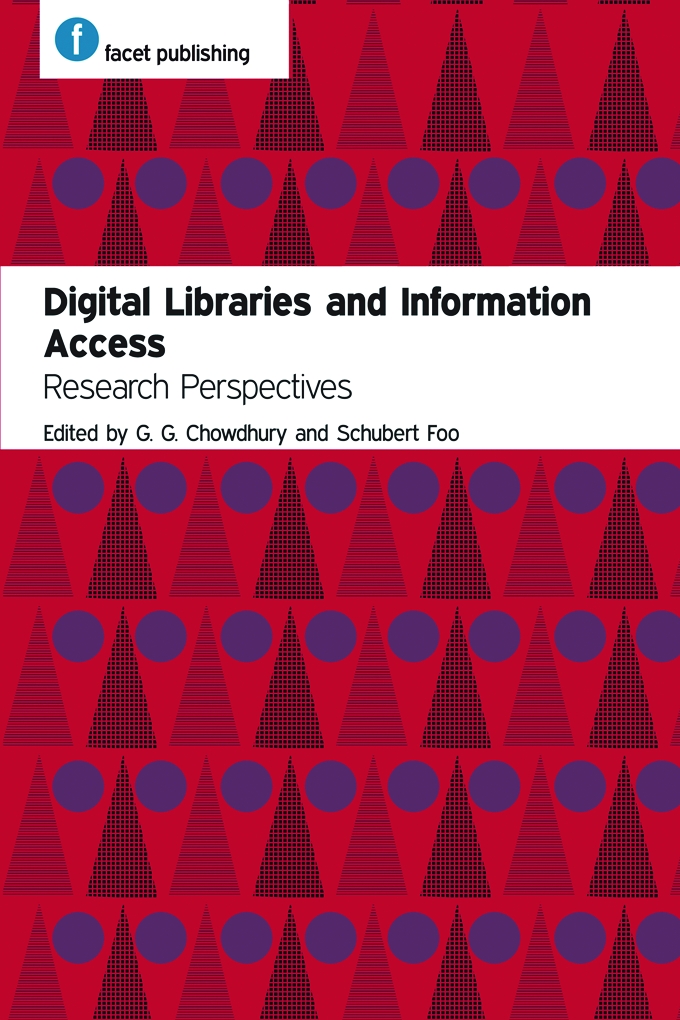Book contents
- Frontmatter
- Contents
- Foreword
- Editors and contributors
- 1 Digital libraries and information access: introduction
- 2 The design and architecture of digital libraries
- 3 Metadata and crowdsourced data for access and interaction in digital library user interfaces
- 4 Information access
- 5 Collaborative search and retrieval in digital libraries
- 6 The social element of digital libraries
- 7 Towards socially inclusive digital libraries
- 8 Users’ interactions with digital libraries
- 9 Digital libraries and scholarly information: technology, market, users and usage
- 10 Digital libraries and open access
- 11 iSTEM: integrating subject categories from multiple repositories
- 12 The usability of digital libraries
- 13 Intellectual property and digital libraries
- 14 Digital preservation: interoperability ad modum
- 15 Digital libraries and information access: research trends
- Index
- Miscellaneous Endmatter
7 - Towards socially inclusive digital libraries
Published online by Cambridge University Press: 08 June 2018
- Frontmatter
- Contents
- Foreword
- Editors and contributors
- 1 Digital libraries and information access: introduction
- 2 The design and architecture of digital libraries
- 3 Metadata and crowdsourced data for access and interaction in digital library user interfaces
- 4 Information access
- 5 Collaborative search and retrieval in digital libraries
- 6 The social element of digital libraries
- 7 Towards socially inclusive digital libraries
- 8 Users’ interactions with digital libraries
- 9 Digital libraries and scholarly information: technology, market, users and usage
- 10 Digital libraries and open access
- 11 iSTEM: integrating subject categories from multiple repositories
- 12 The usability of digital libraries
- 13 Intellectual property and digital libraries
- 14 Digital preservation: interoperability ad modum
- 15 Digital libraries and information access: research trends
- Index
- Miscellaneous Endmatter
Summary
Introduction
Many digital libraries (DLs) are designed to appeal to a much broader community than are physical libraries, and to provide an extension of the resources that are found inside physical libraries, thus transcending spatial limitations (Pomerantz and Marchionini, 2007). However, the potential of the DL to address the limitations of the physical library is only useful if, at the same time, access and usability issues can be addressed.
At times, in the midst of reading about the recent innovation and developments of digital technologies and DLs, one gets the feeling that the current situation with digital initiatives appears to be that a big digital information party is being planned but somehow, in the excitement, someone is being left out. Joseph Licklider and Robert Taylor (1968) foresaw two of the challenges faced today: ‘In a few years, men will be able to communicate more effectively through a machine than face to face’ and ‘For the society, the impact will be good or bad, depending mainly on the question, “Will, to be on line, be a privilege or a right?”’ (52).
As digital information and technologies encroach further and into more areas of our life and endeavours, processes of social exclusion are reproduced in the digital realm. Digital technologies have no doubt revolutionized the lives of much of the world's population. It would be a mistake, however, to assume that the impact of information and communication technologies (ICTs) has been wholly positive. The implication of ICT for economies, locally, nationally or globally, can at times be divisive. The information divide is not limited to the ‘technology insiders’ and ‘technology outsiders’ of cyberspace (Floridi, 2001). Discussions regarding the accessibility of information and digital content have moved on from a focus on digital divide to a focus on social exclusion, which is a much more complex phenomenon.
The concepts of social inclusion and social exclusion can be said to be the two ends of a continuum that relates to how much disadvantage an individual or group suffers in the society in which they live (Hayes, Gray and Edwards, 2009). Social exclusion is not always the result of an intentional act or of intentional policy.
- Type
- Chapter
- Information
- Digital Libraries and Information AccessResearch perspectives, pp. 97 - 112Publisher: FacetPrint publication year: 2012
- 1
- Cited by



